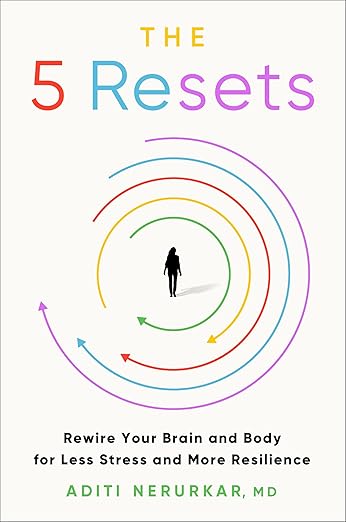Blog Short #222: Is It Ever Okay to Burn a Bridge? (3 Things to Consider)

Photo by Sergei Dolgov, Courtesy of iStock Photo
There’s a Seinfeld episode where George storms into his boss’s office yelling:
That’s it. This is it. I’m done. Through. It’s over. I’m gone. Finished. Over. I will never work for you again. Look at you. You think you’re an important man? Is that what you think? You are a laughing stock, you are a joke, these people are laughing at you. You’re nothing. You have no brains, no ability, nothing. I quit!
And then he blazes back out.
The funny part is that he goes back to work later that same week for a staff meeting and pretends he didn’t quit.
He burned a bridge, realized he burned himself, and then tried to take it back.
That can quickly happen when you let your emotions run wild.
The question is:
Is it ever okay to burn a bridge, and if so, when and how?
Today, I’ll review some guidelines you can use to help make that decision. I’ll also give you strategies for doing it in a way that’s effective while preserving your integrity.
What Does “Burning a Bridge” Mean?
Burning a bridge means ending a relationship, whether with a person, job, or organization, in a way that closes the door to any continued interaction or contact.
It’s meant to be a permanent decision without any possibility of reconsideration.
Before you take that step, consider these factors.
Guidelines for Deciding If and When
1. Play out the consequences.
Start by objectively considering all the possible consequences that could come back to bite you.
The worst thing to do is make an impulsive decision based on runaway emotions.
It might feel great to leave a horrible job in a blaze of glory as you unload all your negative feelings going out the door. That’s what George did. But what happens when you need a recommendation from your boss for the next job?
The world gets smaller when it comes to jobs, especially in a particular profession or area of expertise. People talk, and word can get around about any unprofessional behavior on your part.
Ask yourself these questions:
- How will burning this bridge affect my future in the next 6 months, next year, or five years down the road?
- How will it affect my current circumstances? Will the effects be positive or negative?
- How will it affect those close to me or for whom I have responsibilities?
One other consideration, especially when burning a professional bridge, is to consider your age and stage in your career.
The younger you are, the more likely the decision will come back to haunt you.
That doesn’t mean you should avoid burning the bridge, but you might instead focus on making a change for the better without creating negative consequences that will follow you as you grow professionally.
If, after thoughtful meditation on all these questions, you still wish to burn that bridge because it’s in your best interest, then do so.
I’ll show you how in the next section.
2. Consider the degree of toxicity and its effects on you.
A good reason to burn a bridge is to leave a toxic, abusive relationship that you know has no potential for change or improvement.
Here are some questions to consider in this case:
- Is this relationship damaging me – emotionally, physically, psychologically, socially?
- Can we improve things and work through the toxic issues? For example, would an honest conversation conducted respectfully and calmly make a difference? Would counseling help?
- Would some boundaries give the relationship a chance to improve?
- Do you know that you never want to be linked to or in contact with this person again in the future? Are you certain?
If you come up with the same answers after a good deal of thought and getting some counsel from someone you respect, then go forward. Just be sure that your decision is intentional and not impulsive
3. Is the situation compromising your values and ethics?
If you find yourself in a situation where continued involvement places you in direct opposition to your ethics or values, you may decide to cut ties.
For example:
You’re an engineer and work for a company that builds condos. You find out they’re cutting corners with materials and procedures that would endanger the safety of the buildings. You confront the owner, who denies any problems, so you quit and cut ties permanently with the company and let him know why you’re doing it.
Cutting ties doesn’t have to be loud or public. It can be a personal decision you make and act on without drawing a line in the sand. You simply move on.
Other times you might need to make clear to a person or organization that you’re leaving, why you’re doing it, and that you want no further contact.
Or, as in our example above, you can go public if someone is in danger.
The Dos, Don’ts, and Strategies
The worst time to burn a bridge is when you’re angry, stressed, depressed, or in the throes of reacting emotionally to a situation or person.
Use the guidelines above to be deliberate and thoughtful before taking action.
If you decide to go ahead, use these strategies.
Write out what actions you want to take.
Include the circumstances under which you want to cut ties. For example, if it’s a job you’re leaving, who do you need to speak to? Do you need a second person present? Will you schedule a meeting? Will you put it in writing?
If it’s a personal situation, consider the same questions. Do you want to meet with the person alone or with another person present? Is there any danger?
Plan for any fallout or contingencies.
Write out what you want to say.
Write out what you want to say or list points you wish to cover.
In our example above, where the building contractors were using faulty building materials, the engineer wanted to make sure that he verbally objected to these practices due to safety issues and repercussions to prospective buyers. It was a case of ethics.
In other cases, you might not want a long discussion. You just want to inform the other person you wish no further contact.
Bring your best self to the table.
When you burn the bridge, make sure that your actions are in keeping with your values and who you are and that your behavior is above board.
You might feel very self-satisfied after ranting and storming out of a situation like George did, but the feeling will likely fade and leave you dissatisfied.
You can speak strongly without losing control.
Make sure you manage yourself, what you say, and what you do.
If you do that, the other party is more likely to hear you and learn from the experience.
Also, you’ll have a better sense of closure.
Consider This
When possible, don’t burn a bridge.
Life is fluid, and you’ll find yourself moving through it on a winding path. When you try to navigate it as a straight line, you’ll burn many bridges because you won’t let yourself acclimate to inevitable ups and downs.
You can make changes, shift directions, and try different approaches without burning bridges for the most part.
Sometimes your best bet is to take what you can from a negative situation, learn the lessons, and move on to the next phase. You don’t need to douse the flame at every step.
There are times when burning a bridge is a permanent boundary you must set for your well-being.
That’s fine. Just be sure you think it through carefully before doing it.
That’s all for today.
Have a great week!
All my best,
Barbara

 Dr. Nerurkar is a Harvard-trained stress expert who decided to pursue the study of stress and resilience when she experienced anxiety and involuntary heart palpitations that kept her up at night. She was a med student at the time and overworked, as most medical students are, and couldn’t think her way out of it.
Dr. Nerurkar is a Harvard-trained stress expert who decided to pursue the study of stress and resilience when she experienced anxiety and involuntary heart palpitations that kept her up at night. She was a med student at the time and overworked, as most medical students are, and couldn’t think her way out of it. The premise of this book is that we all live with a narrator in our heads.
The premise of this book is that we all live with a narrator in our heads. One of the opening statements in the first chapter of this book is:
One of the opening statements in the first chapter of this book is: Crucial Conversations is a detailed, actionable manual for how to navigate critical conversations successfully. The authors define a “crucial conversation” as a discussion between two or more people where there are: (1) opposing opinions, (2) high stakes, and (3) strong emotions.
Crucial Conversations is a detailed, actionable manual for how to navigate critical conversations successfully. The authors define a “crucial conversation” as a discussion between two or more people where there are: (1) opposing opinions, (2) high stakes, and (3) strong emotions. The Comfort Book is one of my all-time favorite books. It’s not a book to sit down and read cover to cover, although you could. It’s meant to be read slowly – one entry at a time.
The Comfort Book is one of my all-time favorite books. It’s not a book to sit down and read cover to cover, although you could. It’s meant to be read slowly – one entry at a time.






